|
Displaying items by tag: financial
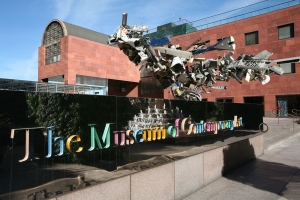
After partnership offers from the Los Angeles County Museum of Art (LACMA) and the National Gallery of Art in Washington, D.C., LA’s Museum of Contemporary Art (MOCA) has decided to remain an independent institution. The museum has been struggling after a spate of financial issues and widespread criticism of its administration and overall direction.
MOCA’s board released a statement on March 19, 2013 explaining, “The board is in agreement that the best future for MOCA would be as an independent institution. The Board understands that this will require a significant increase in MOCA’s endowment to ensure its strong financial standing. We are working quickly toward that goal, while at the same time exploring all strategic options, to honor the best interest of the institution and the artistic community we serve.” There are currently no artists on MOCA’s board after a number of high-profiled artists including John Baldessari, Ed Ruscha, and Barbara Kruger resigned earlier this year.
Earlier this month, LACMA Director Michael Govan offered to raise $100 million for MOCA’s two locations in exchange for the acquisition of the institution. The National Gallery was not interested in an institutional merger but offered to collaborate with MOCA on programming and research initiatives. Eli Broad, one of MOCA’s major benefactors, was in favor of partnering with the National Gallery.
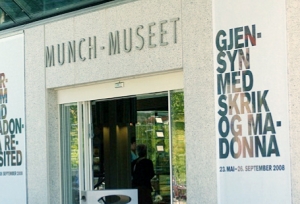
On Wednesday, March 13, 2013 Norwegian officials announced that the country’s government would help fund a new museum devoted to the influential painter and printmaker Edvard Munch (1863-1944). The new institution will replace the current Munch Museum in Oslo, Norway, which was built after World War II in a notoriously rundown neighborhood. Many believe that the shoddily constructed museum does not do justice to Munch, his art or his legacy.
The city council has been discussing the creation of a new museum since 2008 but plans were stymied by disagreements over cost, location, and architecture. After years of disputes and little progress, the Norwegian state decided to step in by offering to help fund the $278 million project as well as assist with project management. State officials are asking Oslo’s city council to make a formal request for the support, which would hopefully lift the museum out of its dismal financial situation.
Upon his death in 1944, Munch bequeathed a large portion of his collection to the city of Oslo including two versions of his seminal painting The Scream. While many people hope that the government’s offer will help move the museum project along, others are not as optimistic. Carl Ivar Hagen, a member of the city council, doesn’t expect the matter to be resolved anytime soon. Hagen believes that even with the state’s assistance disputes over the new museum’s location will continue to halt progress.
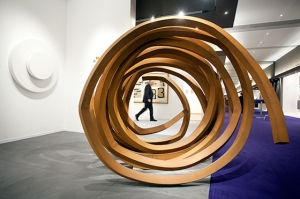
China’s art market experienced a substantial boom in 2011, bumping the United States out of its top spot and ultimately becoming the world’s principal market for art and antiques. In 2012, amid the uncertain global economy, China’s growth began to slow and its art and antiques market shrank by almost a quarter. This deceleration allowed the U.S. to regain its title as the world’s most significant art market.
The power shift was announced as part of the highly anticipated TEFAF Art Market Report compiled by Dr. Clare McAndrew. McAndrew, a cultural economist who specializes in the fine and decorative art market, is the founder of Arts Economics, a company commissioned by The European Fine Art Foundation to provide a yearly analysis of the worldwide art market. The report coincides with the beginning of TEFAF Maastricht, the Foundation’s annual art fair, which begins March 15, 2013 in the Netherlands and runs through March 24, 2013.
Slowing economic growth and a lack of high quality, high priced items on the market are to blame for China’s slip to the second most influential art market. While auction sales dropped by 30% in China, U.S. sale figures were up 5% to $18.4 billion. In 2012, buyers opted to minimize financial risk by buying works by well-known artists at the top end of the market with Post-War and Contemporary art performing the strongest.
Dr. McAndrew will present her findings at the TEFAF Art Symposium on Friday, March 15, 2013 in Maastricht.
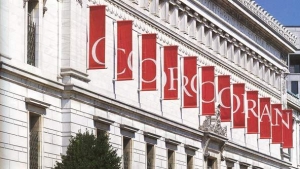
On June 5, 2013 the Corcoran Gallery of Art in Washington, D.C. will auction 25 rugs from its William A. Clark Collection at Sotheby’s New York. The rugs, which are from the 16th and 17th centuries, are estimated to bring as much as $9.6 million.
The rugs were part of a bequest from William Clark (1839-1925), a Montana-based billionaire entrepreneur-turned-senator, to the Corcoran in 1925. The gift was comprised of 200 paintings and drawings and a number of other works, including the rugs.
The Corcoran will use the proceeds from the sale to support future acquisitions that will better fit the institution’s focus on American and contemporary art. While the Corcoran has endured recent financial troubles, the money will not be used for operating expenses in keeping with its deaccession policy.
Highlights from the Corcoran sale include the Clark Sickle-Leaf Carpet, which is expected to garner between $5 million and $7 million. An unknown Persian artist created the rug during the first half of the 17th century possibly for the shah. The rarely exhibited Sickle-Leaf is one of the most iconic and important carpets to appear at auction. Another rug known as the Lafoes Carpet, which measures 44 feet long, is expected to bring between $800,000 and $1.2 million.
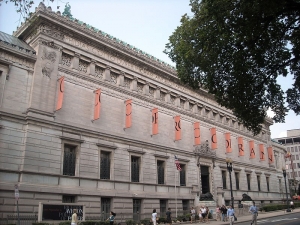
Fans are breathing a sigh of relief after Washington, D.C.’s Corcoran Gallery of Art decided against selling its historic Beaux-Arts home and moving to the suburbs. The cash-strapped institution shocked fans with the proposal, which was announced this summer. Ultimately, the Corcoran’s board of trustees decided that the museum and its associated College of Art and Design, which is in close proximity to the White House, should stay put.
Designed by Ernest Flagg, the Corcoran Gallery opened to the public in 1897 and remains the largest privately supported cultural institution in Washington, D.C. The museum, which specializes in American art, is currently in need of $130 million worth of renovations. While the institution’s façade was restored last year, the galleries are still in need of a major overhaul, which is the main reason why Corcoran officials were considering the sale to begin with.
Although the institution has been struggling financially for years, strong reaction to the potential move has proved inspirational. The Corcoran is considering embarking on partnerships with like-minded institutions and collaborations with other D.C. museums, including the National Gallery of Art, have been explored.
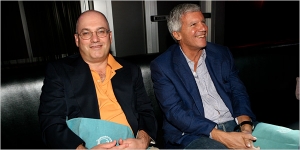
While hedge-fund owner, Steven A. Cohen, is embroiled in a financial fiasco, the art world is anxiously waiting to see what will become of his impressive art collection. The U.S. Securities and Exchange Commission has informed Cohen that his $14 billion company, SAC Capital Advisors LP, could be at the center of an insider-trading lawsuit. The SEC is currently suing SAC Capital’s former portfolio manager, Mathew Martoma.
Cohen, who is worth $9.5 billion, started building his collection around 2001 and is now regarded as one of the biggest and most influential art collectors. Once a major buyer of Impressionist works, Cohen began collecting more contemporary pieces and helped raise prices of big-name artists like Damien Hirst, whose shark in formaldehyde, titled The Physical Impossibility of Death in the Mind of Someone Living, he bought for $8 million.
Cohen’s collection also includes works by Vincent van Gogh, Edouard Manet, Willem de Kooning, Pablo Picasso, Paul Cezanne, Andy Warhol, Francis Bacon, and Jasper Johns. If Cohen’s troubles worsen, he may be forced to dismantle his carefully assembled collection and begin selling his artworks.
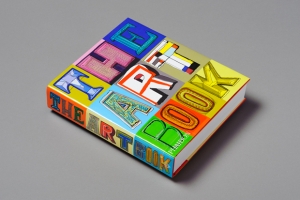
Leon Black, a billionaire financier and chief executive of the private equity firm, Apollo Global Management, announced his acquisition of Phaidon Press, a publisher of fine art books. Black, who paid an undisclosed amount for the company, bought Phaidon from the British businessman, Richard Schlagman.
Phaidon is one of premier publishers of books on the visual arts along with Taschen and Assouline. The company has collaborated with such artists as Ai Wei Wei, Nan Goldin, and Stephen Shore and they publish everything from children books to cookbooks to collector’s editions that often come with signed prints or specially-commissioned pieces of art. On Phaidon’s site there is a statement from Black saying, “We having greatly admired Phaidon and the important contribution the company has made to art and culture. We are impressed with how Richard Schlagman has built the business and the Phaidon brand under his ownership over the last two decades. My family and I look forward to supporting the future of the company, including through the ongoing development of its publishing program, further geographic expansion, and the launch of digital products.”
Black, who is rumored to have paid $120 million for Edvard Munch’s The Scream earlier this year, is one of the country’s most prominent art collectors. In May, Black and his wife announced a $48 million contribution to the new visual arts center at Dartmouth College. An alumnus of the school, Black and his family also included a commissioned sculpture by Ellsworth Kelly in the gift.
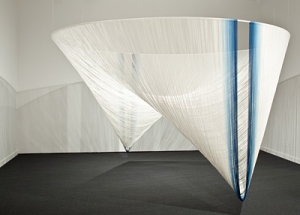
The Museum of Craft and Folk Art (MOCFA) will be closing its doors on December 1, 2012, the date marking the institution’s thirtieth anniversary. Founded in 1982 by craft artist and well-known sculptor, Gertrud Parker, MOCFA is the only folk art museum in Northern California.
After three decades, the Museum’s overseers felt that their mission, to bring recognition and legitimacy to craft and folk art in the contemporary art arena, had been achieved. The poor climate for smaller art institutions was undoubtedly a contributing factor.
Although the art market and leading museums now embraces contemporary artists who borrow from craft traditions, the innovative and daring venues that helped these artists get there are suffering. For instance, this past summer amid financial troubles, the American Folk Art Museum in New York was forced to sell its building on 53rd Street to the Museum of Modern Art and move to a smaller venue.
The MOCFA has exhibited hundreds of artists and significant local and national craft and folk art collections over the years. The Museum is devoted to collaborating with artists on commissions of new work as well as promoting artist-led projects and public programs. MOCFA has worked ardently to provide a place for makers and artists to come together and create, discuss, and learn. The Museum’s final exhibition, Fiber Futures: Japan’s Textile Pioneers, will be on view from now until December 1.
|
|
|
|
|